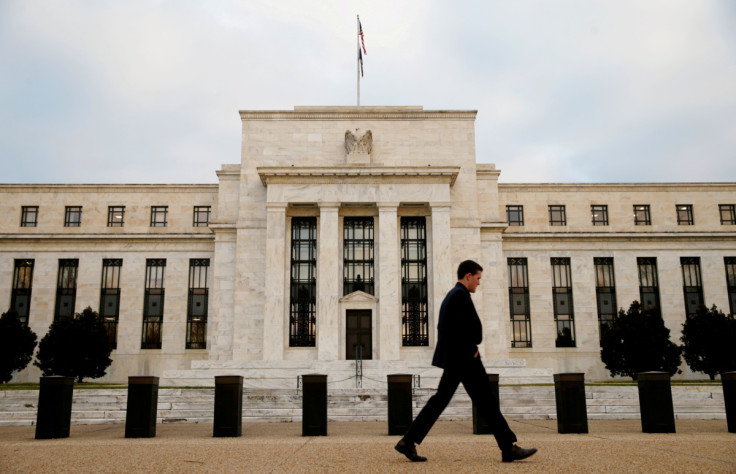Fed Seen Delivering Quarter-point Rate Hike Next Week

With the bulk of relevant economic data now in hand ahead of their policy meeting next week, U.S. central bankers are seen pressing on with their inflation-fighting campaign with a quarter-point interest-rate hike that just days ago looked possibly derailed by turmoil in the banking sector.
The move, which would bring the Fed's benchmark rate to a 4.75%-5% range, would follow the European Central Bank's decision to stick with its own aggressive rate hike, as concern over high inflation outstripped fears of a global banking crisis.
After the ECB's 50-basis point hike and signs the banking crisis is abating, traders of U.S. rate futures firmed up bets on Thursday that the Fed will raise interest rates by 25 basis points next week, and slashed the probability of a pause to about one chance in five.
An unexpected drop in U.S. jobless claims, which pointed to continued labor market strength, and stronger-than-expected housing data on Thursday also boosted trader bets on a Fed rate hike, as they suggest inflationary pressures are far from quelled by the tightening campaign to date.
The U.S. central bank has raised its benchmark overnight interest rate by 450 basis points since last March.
Other reports over the past week showed a still-strong labor market despite some cooling in wage growth, and consumer prices rising at a 6% annual rate last month, slower than in January but still far higher than the Fed's 2% target.
Money markets have swung wildly in recent days amid a whirlwind of news suggesting rate hikes may have driven the banking sector to a breaking point, from the collapse of two large regional U.S. banks prompting emergency action from the Fed and other regulators, to Swiss regulators having to pledge assistance to Credit Suisse.
On Thursday the Fed reported that banks sought record amounts of emergency liquidity in the wake of the failure of Silicon Valley Bank and Signature Bank, driving up the size of the Fed's balance sheet after months of contraction.
Also on Thursday regulators moved forward with plans to find a buyer for those two failed banks; embattled First Republic Bank received $30 billion in fresh deposits from nearly a dozen big banks as part of a rescue package; and Treasury Secretary Janet Yellen told Congress the U.S banking system is safe.
U.S. stocks closed higher.
'DUAL TRACK' APPROACH
"The Fed will likely adopt a 'dual track' policy approach, similar to the ECB, distinguishing monetary policy from macro-prudential policy," said Gregory Daco, chief economist at EY Parthenon, who also sees the U.S. central bank lifting borrowing costs by a quarter of a percentage point next week.
That said, traders no longer expect the Fed to accelerate the pace of its rate hikes to a 50-basis point increase at next week's meeting, as they did a week ago after Fed Chair Jerome Powell signaled he and his colleagues were ready to hike faster and farther if the "totality" of the data suggested the need.
And they now are overwhelmingly pricing in the likelihood of interest-rate cuts starting in the summer, though since the ECB's move they now see the Fed policy rate coming down less sharply.
The Fed will publish new projections for the rate hike path at the end of its March 21-22 meeting. Policymakers in December had seen rates rising to 5.1% this year, with no rate cuts until 2024, and until the banking sector swoon traders had priced in an even higher top Fed policy rate.
U.S. central bankers do not themselves comment publicly on policy for the 10 days leading up to every rate-setting meeting.
© Copyright Thomson Reuters {{Year}}. All rights reserved.





















